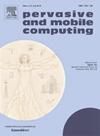蜂窝网络中三维频谱覆盖缺口图的构建:一种非线性估计方法
IF 3.5
3区 计算机科学
Q2 COMPUTER SCIENCE, INFORMATION SYSTEMS
引用次数: 0
摘要
数据收集技术可用于确定给定区域内蜂窝通信网的覆盖条件。在这些任务中,对于较大或难以进入的位置,数据采集过程面临重大挑战。这些挑战可以通过使用无人驾驶飞行器(uav)来缓解。这样,可以克服数据获取障碍,相对容易地获取和处理必要的数据点,以估计有关网络的全区域覆盖图。在本研究中,我们提出了部署无人机获取地理区域内尽可能少的测量数据点的问题,目的是构建该区域的全通信覆盖缺口图。然后,我们设计了一个估计模型,该模型利用测量的数据样本,并相应地确定该地区其他未访问点的通信链路的噪声/损耗水平。所提出的估计模型基于级联前向神经网络,允许输入数据和输出估计之间的非线性和直接线性关系。我们进一步研究了使用线性回归估计的传统方法来确定在检查区域不同位置的接收功率水平。我们的模拟评估表明,所提出的非线性估计器在使用尽可能少的收集数据点的情况下,在通信覆盖误差水平方面优于传统的线性回归技术。然后使用这些最小数据点构建完整的覆盖缺口图可视化,显示调查区域内的整体网络服务状况。本文章由计算机程序翻译,如有差异,请以英文原文为准。
Three-dimensional spectrum coverage gap map construction in cellular networks: A non-linear estimation approach
Data collection techniques can be used to determine the coverage conditions of a cellular communication network within a given area. In such tasks, the data acquisition process faces significant challenges for larger or inaccessible locations. Such challenges can be alleviated through the use of unmanned aerial vehicles (UAVs). This way, data acquisition obstacles can be overcome to acquire and process the necessary data points with relative ease to estimate a full area coverage map for the concerned network. In this study, we formulate the problem of deploying a UAV to acquire the minimum possible measurement data points in a geographical region for the purpose of constructing a full communication coverage gap map for this region. We then devise an estimation model that utilizes the measured data samples and determines the noise/loss levels of the communication links at the other unvisited spots of the region accordingly. The proposed estimation model is based on a cascade-forward neural network to allow for both nonlinear and direct linear relationships between the input data and the output estimations. We further investigate the conventional method of using linear regression estimators to decide on the received power levels at the different locations of the examined area. Our simulation evaluations show that the proposed nonlinear estimator outperforms the conventional linear regression technique in terms of the communication coverage error level while using the minimum possible collected data points. These minimum data points are then used in constructing a complete coverage gap map visualization that demonstrates the overall network service conditions within the surveyed region.
求助全文
通过发布文献求助,成功后即可免费获取论文全文。
去求助
来源期刊

Pervasive and Mobile Computing
COMPUTER SCIENCE, INFORMATION SYSTEMS-TELECOMMUNICATIONS
CiteScore
7.70
自引率
2.30%
发文量
80
审稿时长
68 days
期刊介绍:
As envisioned by Mark Weiser as early as 1991, pervasive computing systems and services have truly become integral parts of our daily lives. Tremendous developments in a multitude of technologies ranging from personalized and embedded smart devices (e.g., smartphones, sensors, wearables, IoTs, etc.) to ubiquitous connectivity, via a variety of wireless mobile communications and cognitive networking infrastructures, to advanced computing techniques (including edge, fog and cloud) and user-friendly middleware services and platforms have significantly contributed to the unprecedented advances in pervasive and mobile computing. Cutting-edge applications and paradigms have evolved, such as cyber-physical systems and smart environments (e.g., smart city, smart energy, smart transportation, smart healthcare, etc.) that also involve human in the loop through social interactions and participatory and/or mobile crowd sensing, for example. The goal of pervasive computing systems is to improve human experience and quality of life, without explicit awareness of the underlying communications and computing technologies.
The Pervasive and Mobile Computing Journal (PMC) is a high-impact, peer-reviewed technical journal that publishes high-quality scientific articles spanning theory and practice, and covering all aspects of pervasive and mobile computing and systems.
 求助内容:
求助内容: 应助结果提醒方式:
应助结果提醒方式:


